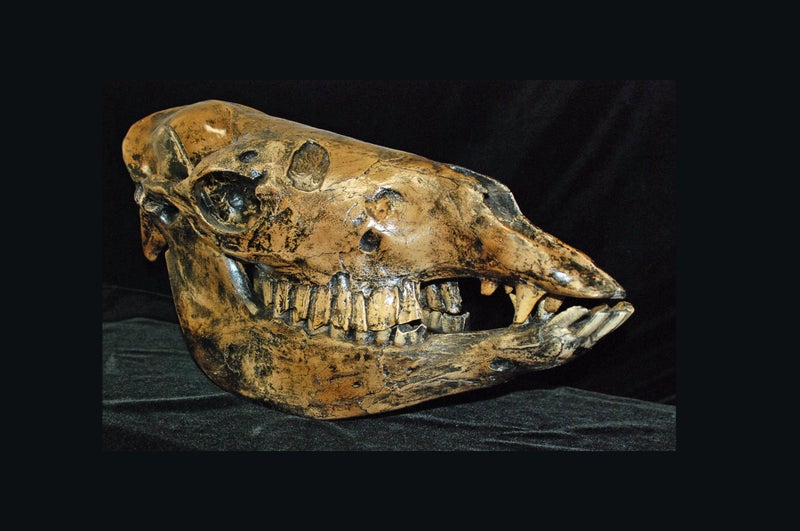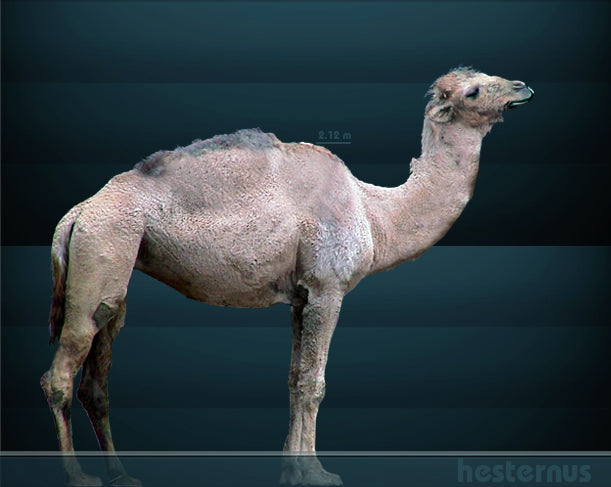Camelops Yesterday's Camel cast replica
Camelops Yesterday's Camel cast replica
Camelopes hesternus.
YESTERDAY'S CAMEL.SKULL.
Plestocene Rancholabrea CAMELIDAE. Extinct Camel.
LACMNH Page Museum La Brea replica.
Skull length:__
Camelops?is an extinct??of??that lived in??and?, ranging from Alaska to Honduras, from the middle??to the end of the?. It is more closely related to the???and??and??than the?New World?guanaco?and?vicu?a, and?alpaca?and?llama, making it a true camel of the?Camelini?tribe.?Its name is derived from the?Ancient Greek?¦Ê?¦̦Ǧ˦Ï??(c¨¢m¨¥los, camel)[3]?and??¦×?(¨®ps, face),[4]?i.e. camel-face.
Because soft tissues are generally not preserved in the?fossil record, it is not certain if?Camelops?possessed hump(s), like modern camels, or lacked ones, like modern Camelidaes of South America (guanacos?and?vicunas). One-humped camels are now known to have evolved from two-humped camels, but two-humps, as an evolutionary outcome, likely associated with arctic climates and two-humped camels presumably evolved into one-humped camels in warmer regions in Eurasia,[9]?while?Camelops?first appeared in southern North America and lived among both warmer and colder regions of the continent until early?Holocene.
C. hesternus?had legs to be 20% longer than that of?Dromedary, and was about 2.3?m (7?ft 7?in) tall at the shoulder and weighed about 1,000?kg (2,200?lb).[10
Product features
Product features
Materials and care
Materials and care
Merchandising tips
Merchandising tips
Share



